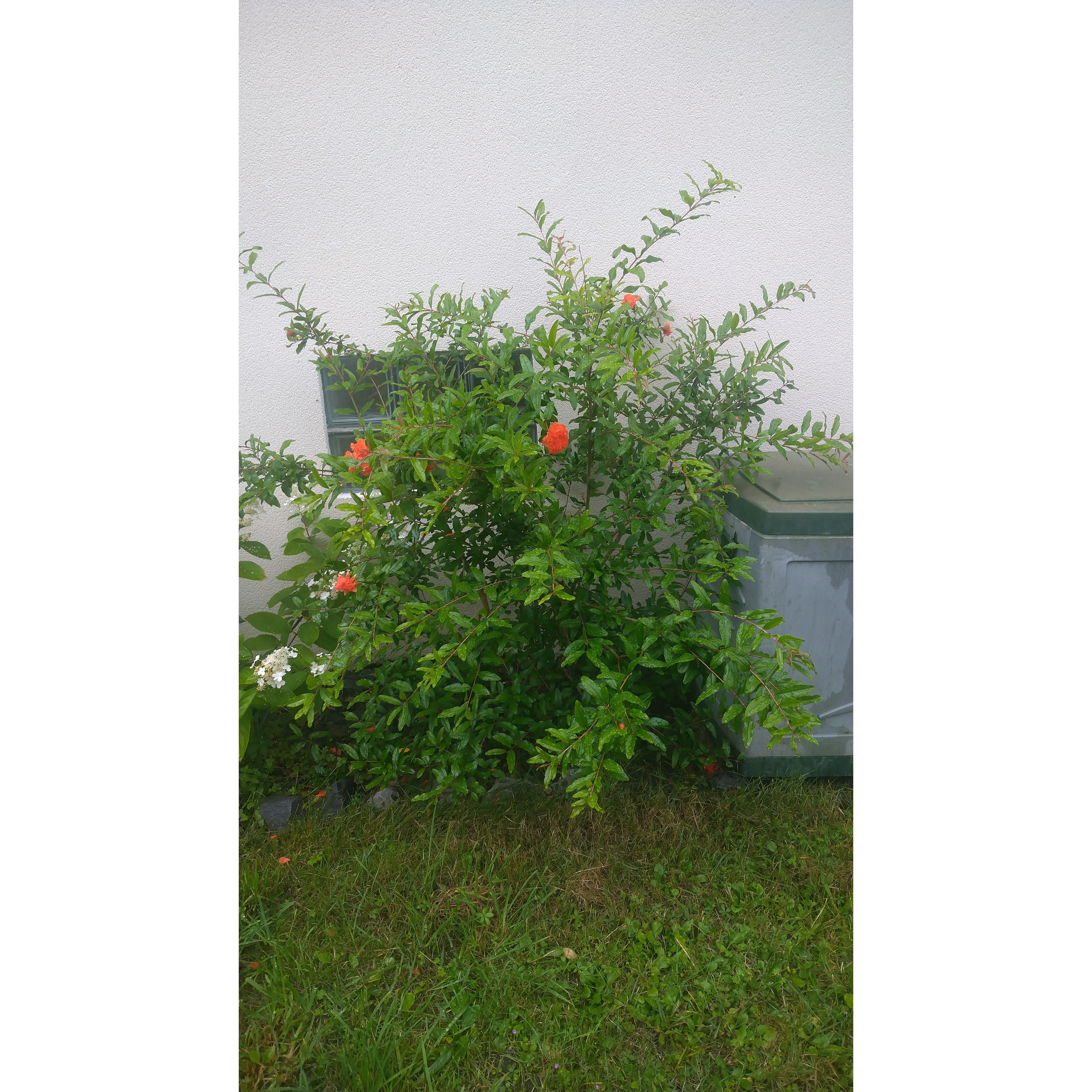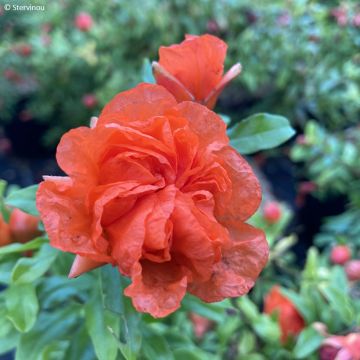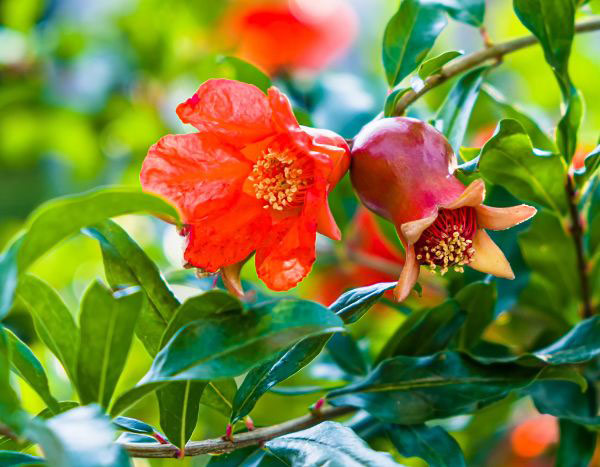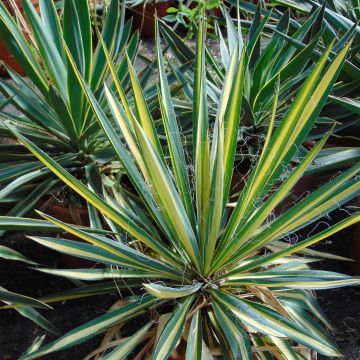

Punica granatum Maxima Rubra - Pomegranate


Punica granatum Maxima Rubra - Pomegranate
View more pictures
Hide images

Totaro C.

Pomegranate tree - Punica granatum Maxima Rubra
Totaro C. • 91 FR
Punica granatum Maxima Rubra - Pomegranate
Punica granatum Maxima Rubra
Pomegranate
This is the plant that adapted the fastest to its new spot, arrived in superb condition.
Katia , 26/06/2025
Special offer!
Receive a €20 voucher for any order over €90 (excluding delivery costs, credit notes, and plastic-free options)!
1- Add your favorite plants to your cart.
2- Once you have reached €90, confirm your order (you can even choose the delivery date!).
3- As soon as your order is shipped, you will receive an email containing your voucher code, valid for 3 months (90 days).
Your voucher is unique and can only be used once, for any order with a minimum value of €20, excluding delivery costs.
Can be combined with other current offers, non-divisible and non-refundable.
Home or relay delivery (depending on size and destination)
Schedule delivery date,
and select date in basket
This plant carries a 24 months recovery warranty
More information
We guarantee the quality of our plants for a full growing cycle, and will replace at our expense any plant that fails to recover under normal climatic and planting conditions.

Would this plant suit my garden?
Set up your Plantfit profile →
Description
Punica granatum Maxima Rubra is a stunning pomegranate tree with a long summer flowering period of bright orange-red flowers, wonderfully complemented by its glossy dark green foliage. Its large, double, crinkled flowers are filled with petals that have a texture resembling tissue paper, but they never form any fruits. This is unimportant considering its generosity and true adaptability: if protected during its early years, the young plant will become a robust bush, indifferent to drought and much hardier than one might think, as evidenced by an old specimen that has been growing in the ground for over 20 years at the Botanical Garden of the University of Strasbourg.
The origins of the pomegranate tree are believed to lie in a vast region that covers southeastern Europe and extends eastwards to the Himalayas. This deciduous tree belonging to the Lythraceae family is related to the purple loosestrife (Lythrum salicaria), which is widespread near watercourses. It has been cultivated since ancient times for its fruits and magnificent flowering.
The 'Maxima Rubra' variety, like all double-flowered pomegranate cultivars, does not produce fruits but offers large, double flowers. It quickly forms a non-thorny cluster of tangled branches with fairly rapid growth until it reaches maturity, which does not occur before the age of 5. The adult plant develops at a much slower pace, eventually forming a small tree 3.5m (11 ft 6 in) tall and 2.5 to 3m (8 ft 2 in to 9 ft 10 in) wide, with a slightly spreading and rounded habit, more upright than fruit-bearing varieties. From a cluster, it becomes a tree with a trunk that has a twisted appearance, reminiscent of the charm of olive trees. The flowering occurs en masse in June-July, and then more sporadically throughout the summer. The large flowers are composed of numerous crinkled petals emerging from a thick, waxy-textured calyx that already resembles a pomegranate, but will fall without forming any fruit. They are intense vermilion red under the summer sun, in perfect harmony with the intense, vivid, and shiny green foliage. The deciduous foliage consists of small, thick, glossy, ovate leaves that are bright green. They emerge bronze to purple in spring and turn yellow before falling in autumn.
A symbol of abundance, like its emblematic ancestor of ancient civilizations, the Maxima Rubra pomegranate tree is a magnificent specimen to plant in isolation in all regions where temperatures are not likely to drop below -17°C (1.4 °F). It will grow without any problems wherever olive trees and fig trees manage to thrive. However, it still needs warmth and sun in summer to flower abundantly. It can also be used as a hedge, with regular pruning, combined with a star jasmine (Trachelospermum jasminoides), myrtles, and even, as in the gardens of the Alhambra, large shrub roses (Rosa complicata, Rosa glauca, Ghislaine de Feligonde, Roseraie de l'Haye...). On the terrace, it will stand out in a large pot, alongside citrus trees, Grevillea, and oleanders. This cultivation method allows the tree to be stored in a very bright, warm location in very cold regions.
The city of Granada, a crossroads of Arab and Andalusian civilizations located in southern Spain, owes its name to the presence of the pomegranate tree, brought by the Moors and abundantly planted in the mythical gardens of the Alhambra Palace. This tree also thrived in the Hanging Gardens of Babylon, and the Romans, who discovered it in Carthage, named it the Apple of Carthage.
Punica granatum Maxima Rubra - Pomegranate in pictures




Plant habit
Flowering
Foliage
Botanical data
Punica
granatum
Maxima Rubra
Lythraceae
Pomegranate
Cultivar or hybrid
Other Punica - Pomegranate
View all →Planting and care
We advise you to plant the Punica granatum Maxima Rubra in spring, after the last frost, in cool regions, but autumn in hot and dry climates. Plant it in a very sunny and sheltered location, or in partial shade in hot climates, in deep, well-drained soil, even if it is limestone. While it tolerates drought well and can handle arid conditions, it will only reach its full potential and bloom abundantly in soil that is sufficiently moist in depth. It also withstands salt spray. Monitor watering during the first two summers. It will appreciate the addition of compost and a thick layer of dead leaves, especially during the first two winters in cold regions. Pruning in early spring can help shape a small tree with a single trunk or beautifully carried by 3 or 4 trunks: keep the most vigorous stem(s) in a young plant and remove the others. In the following years, systematically remove the branches that grow on the trunk(s), until the desired height is reached.
The pomegranate tree does not have any specific enemies; it is a very robust species.
Propagation can be done through hardwood cuttings in winter or softwood cuttings in spring.
Planting period
Intended location
Care
Planting & care advice
-
, onOrder confirmed
Reply from on Promesse de fleurs
Similar products
Haven't found what you were looking for?
Hardiness is the lowest winter temperature a plant can endure without suffering serious damage or even dying. However, hardiness is affected by location (a sheltered area, such as a patio), protection (winter cover) and soil type (hardiness is improved by well-drained soil).

Photo Sharing Terms & Conditions
In order to encourage gardeners to interact and share their experiences, Promesse de fleurs offers various media enabling content to be uploaded onto its Site - in particular via the ‘Photo sharing’ module.
The User agrees to refrain from:
- Posting any content that is illegal, prejudicial, insulting, racist, inciteful to hatred, revisionist, contrary to public decency, that infringes on privacy or on the privacy rights of third parties, in particular the publicity rights of persons and goods, intellectual property rights, or the right to privacy.
- Submitting content on behalf of a third party;
- Impersonate the identity of a third party and/or publish any personal information about a third party;
In general, the User undertakes to refrain from any unethical behaviour.
All Content (in particular text, comments, files, images, photos, videos, creative works, etc.), which may be subject to property or intellectual property rights, image or other private rights, shall remain the property of the User, subject to the limited rights granted by the terms of the licence granted by Promesse de fleurs as stated below. Users are at liberty to publish or not to publish such Content on the Site, notably via the ‘Photo Sharing’ facility, and accept that this Content shall be made public and freely accessible, notably on the Internet.
Users further acknowledge, undertake to have ,and guarantee that they hold all necessary rights and permissions to publish such material on the Site, in particular with regard to the legislation in force pertaining to any privacy, property, intellectual property, image, or contractual rights, or rights of any other nature. By publishing such Content on the Site, Users acknowledge accepting full liability as publishers of the Content within the meaning of the law, and grant Promesse de fleurs, free of charge, an inclusive, worldwide licence for the said Content for the entire duration of its publication, including all reproduction, representation, up/downloading, displaying, performing, transmission, and storage rights.
Users also grant permission for their name to be linked to the Content and accept that this link may not always be made available.
By engaging in posting material, Users consent to their Content becoming automatically accessible on the Internet, in particular on other sites and/or blogs and/or web pages of the Promesse de fleurs site, including in particular social pages and the Promesse de fleurs catalogue.
Users may secure the removal of entrusted content free of charge by issuing a simple request via our contact form.
The flowering period indicated on our website applies to countries and regions located in USDA zone 8 (France, the United Kingdom, Ireland, the Netherlands, etc.)
It will vary according to where you live:
- In zones 9 to 10 (Italy, Spain, Greece, etc.), flowering will occur about 2 to 4 weeks earlier.
- In zones 6 to 7 (Germany, Poland, Slovenia, and lower mountainous regions), flowering will be delayed by 2 to 3 weeks.
- In zone 5 (Central Europe, Scandinavia), blooming will be delayed by 3 to 5 weeks.
In temperate climates, pruning of spring-flowering shrubs (forsythia, spireas, etc.) should be done just after flowering.
Pruning of summer-flowering shrubs (Indian Lilac, Perovskia, etc.) can be done in winter or spring.
In cold regions as well as with frost-sensitive plants, avoid pruning too early when severe frosts may still occur.
The planting period indicated on our website applies to countries and regions located in USDA zone 8 (France, United Kingdom, Ireland, Netherlands).
It will vary according to where you live:
- In Mediterranean zones (Marseille, Madrid, Milan, etc.), autumn and winter are the best planting periods.
- In continental zones (Strasbourg, Munich, Vienna, etc.), delay planting by 2 to 3 weeks in spring and bring it forward by 2 to 4 weeks in autumn.
- In mountainous regions (the Alps, Pyrenees, Carpathians, etc.), it is best to plant in late spring (May-June) or late summer (August-September).
The harvesting period indicated on our website applies to countries and regions in USDA zone 8 (France, England, Ireland, the Netherlands).
In colder areas (Scandinavia, Poland, Austria...) fruit and vegetable harvests are likely to be delayed by 3-4 weeks.
In warmer areas (Italy, Spain, Greece, etc.), harvesting will probably take place earlier, depending on weather conditions.
The sowing periods indicated on our website apply to countries and regions within USDA Zone 8 (France, UK, Ireland, Netherlands).
In colder areas (Scandinavia, Poland, Austria...), delay any outdoor sowing by 3-4 weeks, or sow under glass.
In warmer climes (Italy, Spain, Greece, etc.), bring outdoor sowing forward by a few weeks.



























































